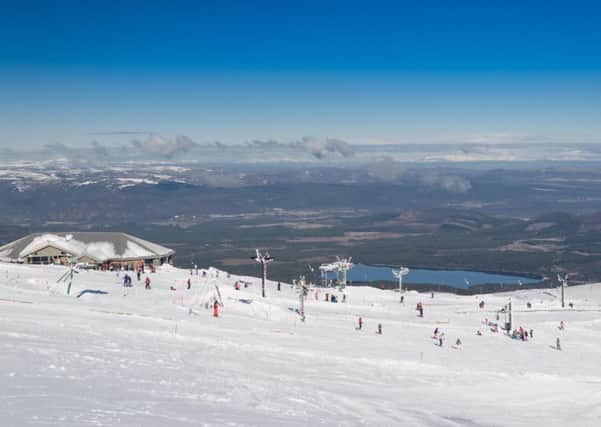CairnGorm Mountain loses market share in bumper year for Scottish skiing


But as the old saying goes, there are lies, damned lies and statistics, and while the headline skier days figure for 2017/18 is undeniably positive, when you break it down into its constituent parts it shows that, in fact, not all of the ski centres had such a fantastic year.
A document prepared by the Aviemore Business Association (ABA) and sent to MSPs does exactly that, and it shows that while Glencoe, Glenshee and Nevis all enjoyed increases in market share and the Lecht showed a small decline, the big loser was CairnGorm, with a significant drop.
Advertisement
Hide AdAdvertisement
Hide AdHow significant? It should be noted at this point that the ABA has in the past been highly critical of Natural Retreats, the company that operates CairnGorm Mountain – not least because of the dismantling last summer of chairlift infrastructure on the Coire na Ciste side of the hill – and last autumn they laid out plans for a community buyout of the ski area. As you might expect then, the document they sent to MSPs is set up to contrast the average market share of CairnGorm pre-2014, the year Natural Retreats took it over (40.6 per cent), with average market share since then (32.3 per cent), the implication being that this drop in market share is a direct result of mismanagement on the part of Natural Retreats.
Because the numbers are presented in this way, CairnGorm’s 2017/18 market share of just 23.6 per cent looks like a truly “dramatic collapse” as the ABA document has it – not much more than half the ten year average for the seasons from 2004-2013. However, as already noted, the folks at the ABA have something of an agenda and – of course – they have presented their statistics in a certain way in order to achieve maximum impact.
Just to be clear, there’s nothing dishonest or underhand about the way the ABA have prepared this document, but in the interests of giving Natural Retreats the benefit of the doubt, Final Words has blown the cobwebs from his calculator and done yet more number crunching, calculating the average market share at the five resorts for the ten seasons up to and including 2016/17. Rounded to the nearest whole number, as readers are by this stage doubtless getting thoroughly sick of decimal points, the average market shares are: CairnGorm: 35 per cent, Glenshee 31 per cent, Lecht 13 per cent, Glencoe 11 per cent and Nevis 10 per cent.
So, while the CairnGorm market share stat for 2017/18 is still a cause for concern, it’s perhaps not quite as apocalyptic as the ABA document suggests – a drop of 32 per cent based on the average from the last ten seasons, as opposed to a drop of 42 per cent based on the average for the ten seasons before Natural Retreats took over.
Any way you slice it though, it’s a big old drop, and no statistical sleight of hand can disguise the fact that, while the other four resorts were all making hay last year, CairnGorm was suffering. The question is: why?
According to Jamie Johnston of Save the Ciste, the pressure group that tried and failed to get the old chairlifts on the Coire na Ciste side of CairnGorm brought back into use, it was the removal of these lifts last summer and the negative message it sent about the future of skiing at the resort that put people off.
“It is unquestionable now that skiers are voting with their feet and choosing to ski at the other centres instead,” says Johnston. “This is not surprising given that the other centres are actively building new lifts, rather than taking them down.”
But Ewan Kearney, director and chief operating officer of Natural Retreats, has an alternative explanation.
Advertisement
Hide AdAdvertisement
Hide Ad“I don’t think that affected the skier numbers,” he says, of the lifts theory. “I think the biggest impact on skier numbers were the 25 days closed and the 25 further partial days closed due to winter storms.”
But those storms would’ve affected other resorts as well, wouldn’t they?
“Yes,” says Kearney, “but if the wind’s blowing in one direction it can affect us dramatically but not other ski areas. Just the 25 full days we lost equate to about 17,000 skier days, so if you added that on it would’ve taken us up to about where we’d expect to be in a good year.”
So was CairnGorm scuppered by negative publicity last season, or by strong winds coming from the wrong direction? There’s probably an elaborate equation that would allow us to calculate the answer to that question but frankly, that’s way beyond Final Words’ rather rudimentary maths skills. If anyone knows what it is though, please get in touch.